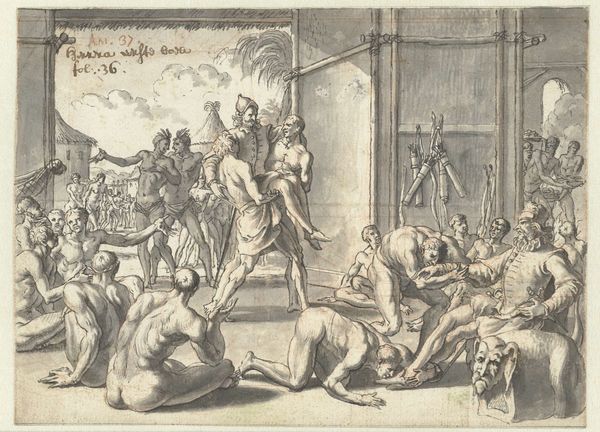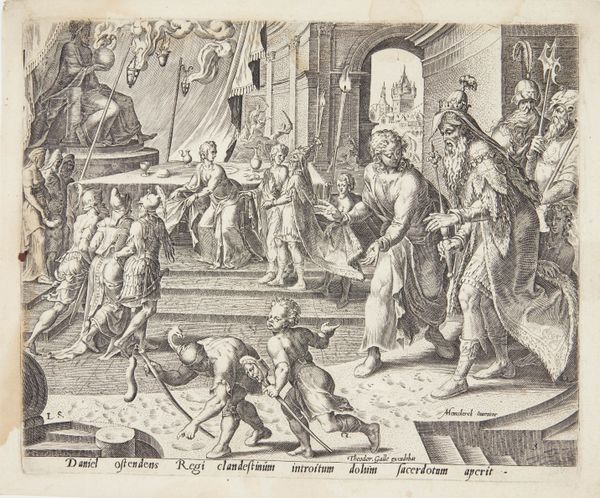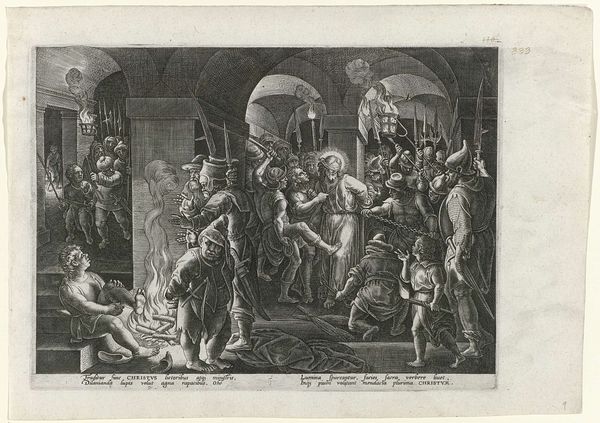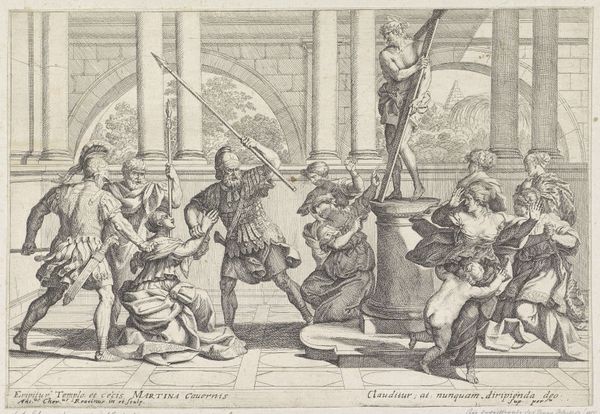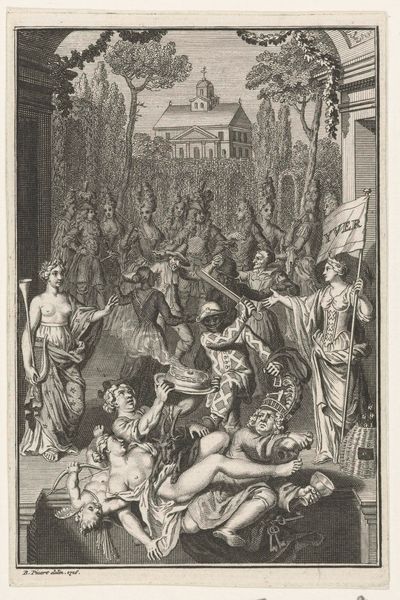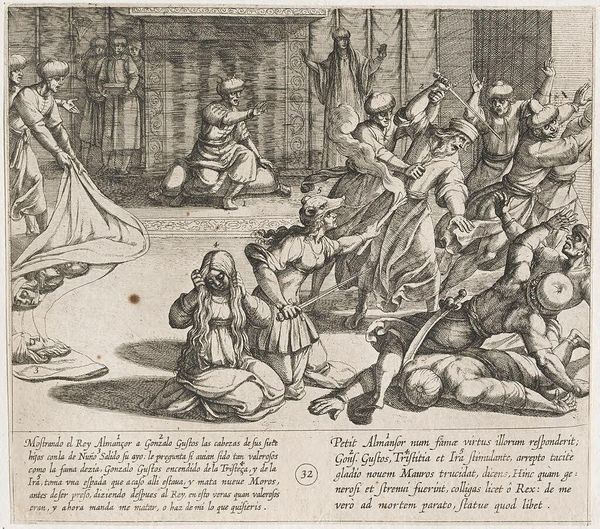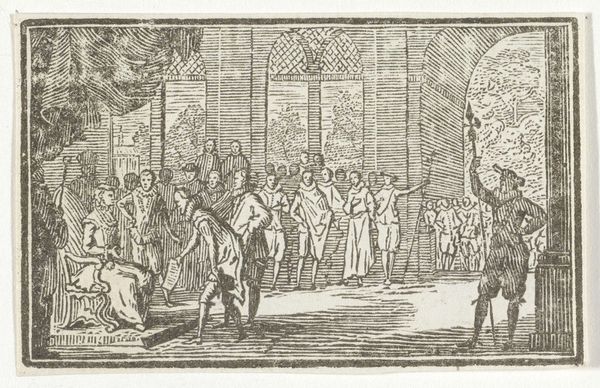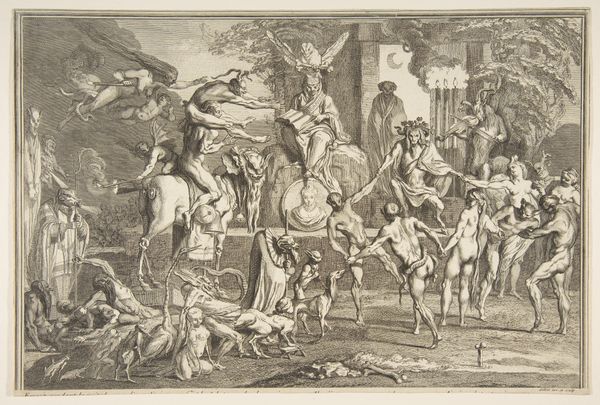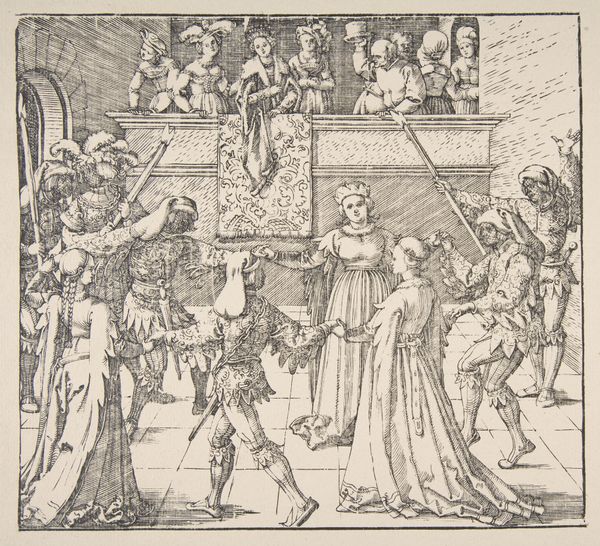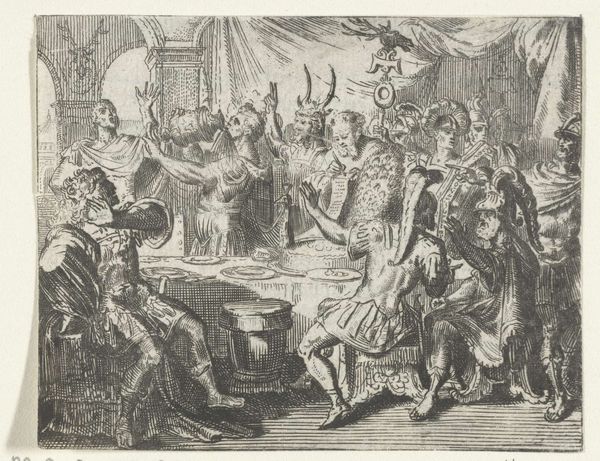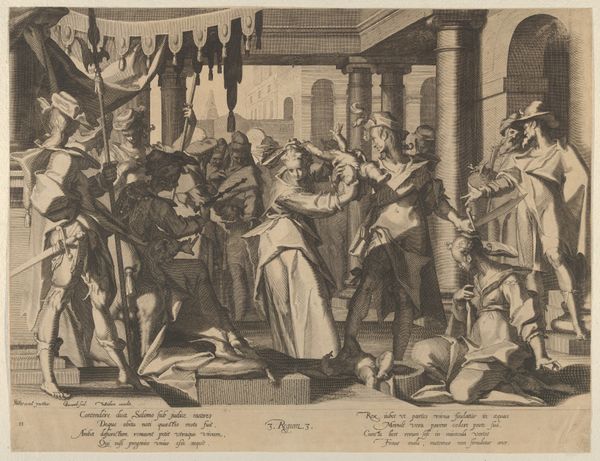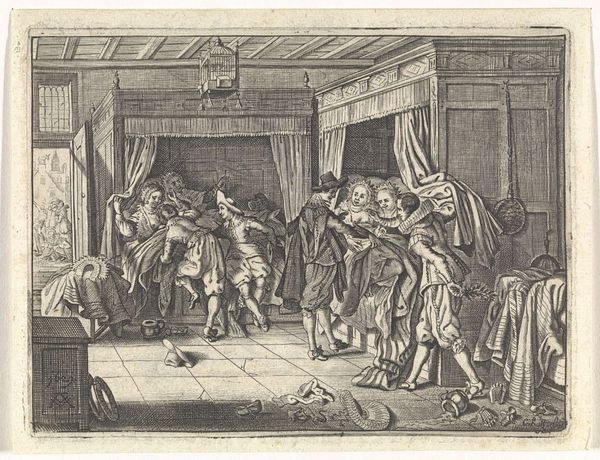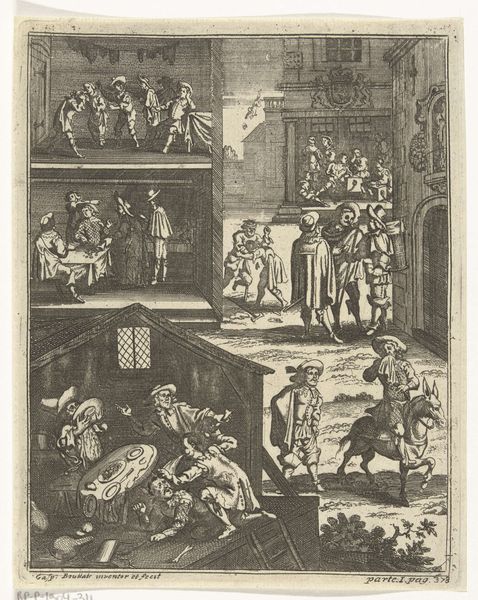
Allegorie op de neutraliteit van Nederland in de Oostenrijkse Successieoorlog, 1742 1742
0:00
0:00
print, engraving
#
allegory
#
baroque
#
pen drawing
# print
#
figuration
#
line
#
history-painting
#
engraving
Dimensions: height 216 mm, width 295 mm
Copyright: Rijks Museum: Open Domain
Editor: This is a print from 1742, titled "Allegorie op de neutraliteit van Nederland in de Oostenrijkse Successieoorlog," or Allegory on the Neutrality of the Netherlands in the Austrian War of Succession. There's a lot happening in this baroque engraving—it's incredibly detailed. It almost feels like a stage production, doesn't it? What does this artwork tell us about the Netherlands at that moment in history? Curator: Indeed. It presents a complex argument about Dutch neutrality through the popular visual language of allegory. Look at the scales dominating the composition. These weren't simply decorative elements, but tools used to present the complexities of 18th century foreign policy, laden with ethical and philosophical connotations. Consider the fact that this print, made for public consumption, aimed to promote and defend a particularly fragile position: remaining neutral in a European-wide war, which had its own political repercussions at home, creating divisions within the governing Dutch elite and society. Editor: So, by using allegory, the artist is making a case for neutrality that’s digestible to the public? What kind of discussions were these images sparking? Curator: Exactly! Allegorical prints like this one were critical for shaping public opinion and bolstering government legitimacy. Who does the artist represent and who is he missing? Why chose those symbolic characters to support neutrality? These prints were political tools and the artist wants us to reflect on those themes too. The fact that an engraving could spark lively debates in coffee houses, political clubs, and private homes highlights the intersection of art, power, and social discourse. Editor: It's fascinating to see how an image could become such an important medium for political messaging. Curator: Precisely. Examining the context surrounding its production and reception opens up new avenues for understanding its role in shaping national identity and political culture. And remember the absence of discussion may also be deliberate on behalf of the ruling elite. Editor: Thinking about art as a tool for public debate, especially in times of conflict, really changes my perspective on its significance. Curator: It invites us to explore the dynamic relationship between art, the state, and its citizens, in a historical conversation that continues to evolve.
Comments
No comments
Be the first to comment and join the conversation on the ultimate creative platform.
